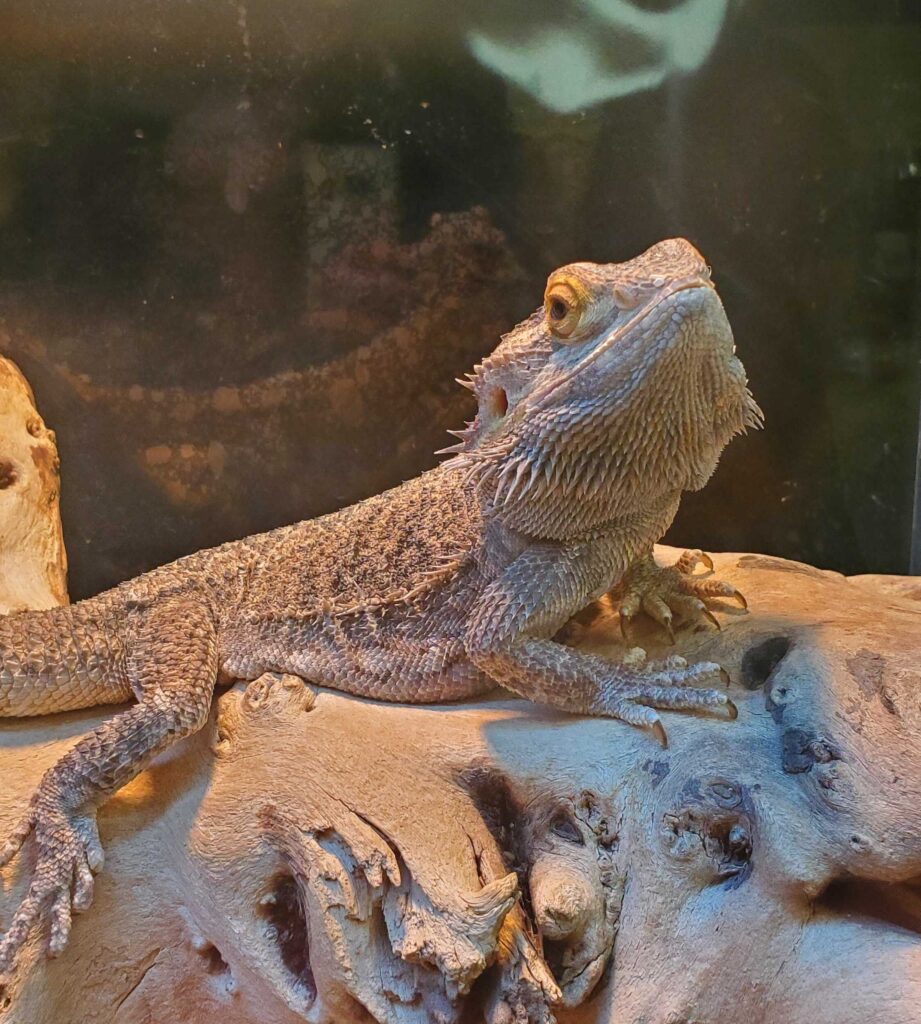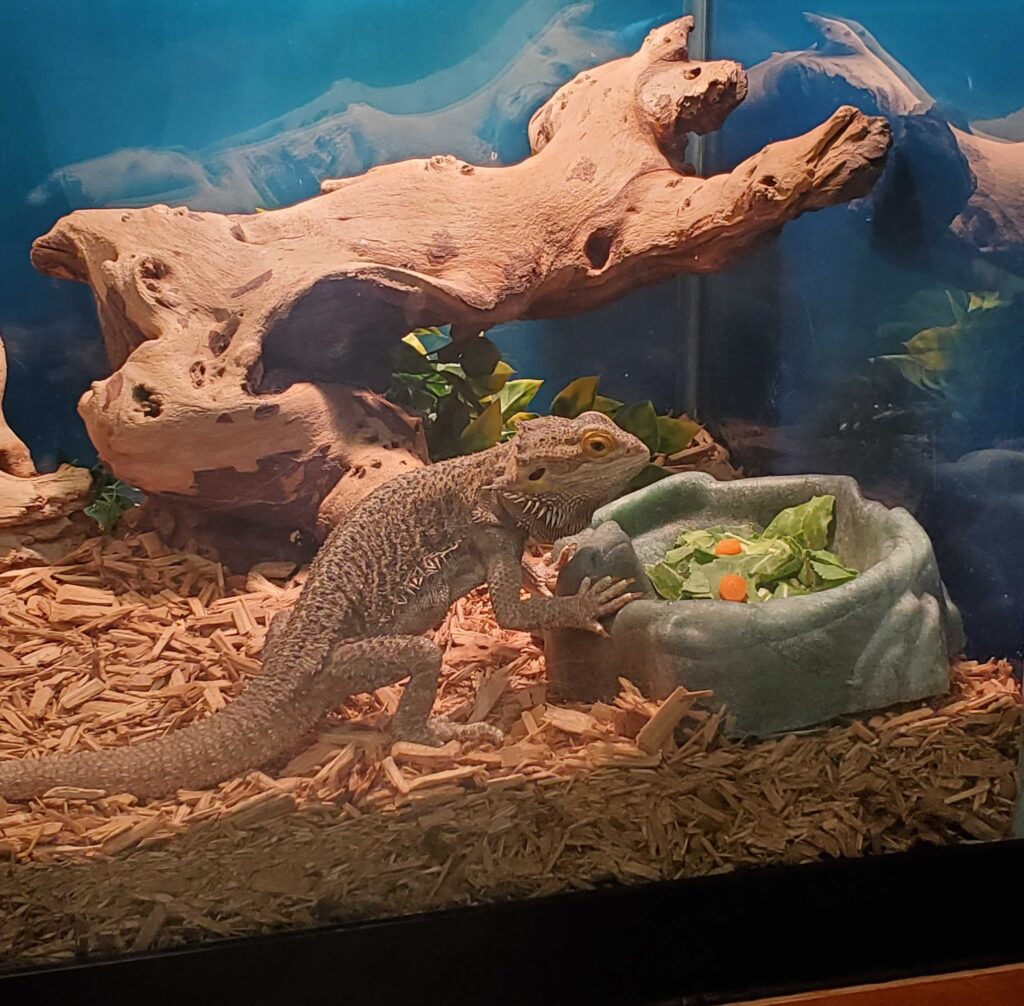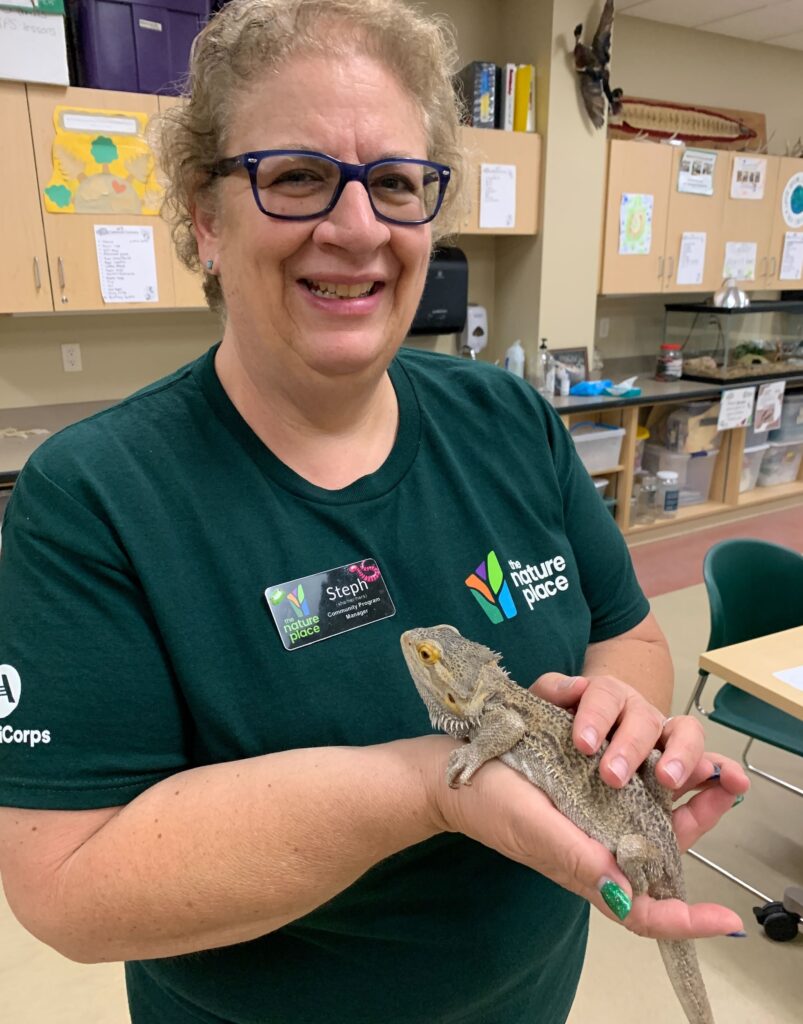By Stephanie Hanna | Community Program Manager
After working as an environmental educator for a while, it turns out that I find reptiles to be absolutely amazing creatures. When I was being interviewed for this job 25 years ago, I told the person doing the interview, who would become my boss, that I was not crazy about insects and she said that’s OK but how do you feel about reptiles because we do have a fox snake that you will have to feed. Learning about, caring for, and having reptiles help me teach has been one of the highlights of this work. I have also learned a lot from Matt Heeter, our animal specialist, and I have taught myself a lot because of our programs.
I know that one can always learn more and when I looked at James Franco, our bearded dragon, today and he turned his head to look at me, I realized that I do not know as much as I should about them. And yes James was named after the actor but I am not sure why. Perhaps because James Franco has appeared in Spider-Man movies as a villain and bearded dragons are omnivorous and will eat spiders.

Bearded dragons have excellent vision and hearing and they can see in color. This was evident when I tried to feed James some purple cabbage from a lettuce mix. He readily ate the green stuff but not the purple stuff. I tried it a few times and he only ate the green stuff. I left the purple stuff in his food bowl and when he had a chance to examine it more closely he started to eat it.
The name bearded comes from having a beard of spikes under the chin that will indicate different moods. It is kind of like they wear a mood ring under their chin. Once I was holding James close to one of our snake habitats and suddenly I noticed that his beard was black and puffed up! Snakes are one of the beardies’ predators! He could see the snake and was not impressed. I apologized to James by bringing him back to his habitat and offering one of his favorite foods – crickets.

While not effusive and certainly not as emotional as dogs, cats, and other mammals, bearded dragons are known to show signs of affection to their owners. For example, they will remain calm when handled or sit still on their owner’s lap. James seems to have forgiven me because he will sometimes wave at me and or do a slow head bob and he will usually remain quite calm when I handle him.
Bearded dragons are not social creatures by nature. In the wild, they live alone. According to National Geographic the bearded dragons’ range is most of Australia. Like all reptiles, they need a warm habitat since they are cold-blooded and rely on external heat sources to raise their body temperature. They are also sort of arboreal and like to climb. James does have some wood to climb which keeps him active in his habitat at The Nature Place.

Beardies are also territorial and might fight to defend their territory from other males or fight for food or a female. Both males and females might open their mouths, raise their chin, and puff out their beards to make themselves seem bigger. They might also hiss when they do this. And of course, they also exhibit this kind of behavior when they come face to face with a predator!
To find out more about James, the bearded dragon, and The Nature Place’s other live reptiles come and visit The Nature Place. On the first Saturday of the month (except for this Saturday, July 6) I take some of our live reptiles out of their habitat for a visit between 9:30 and 11:30 AM. By the way, I have come to appreciate and respect how wonderful insects are but I still prefer not the handle them if I do not have to. So you will have to ask Gabby, our Community Program Educator, to take out and show you the Madagascar Hissing Cockroaches.

